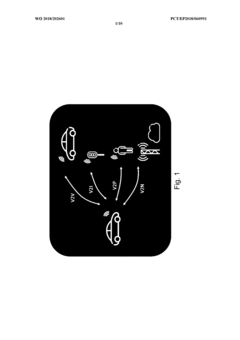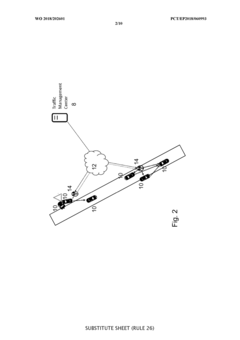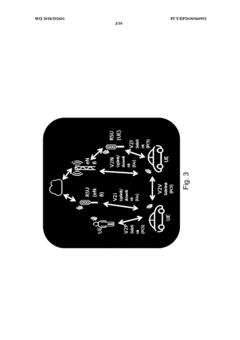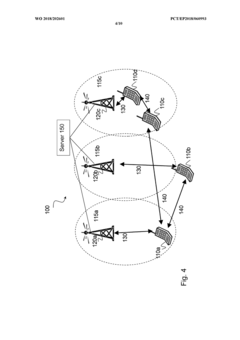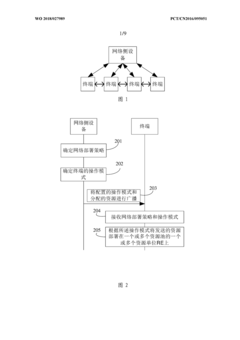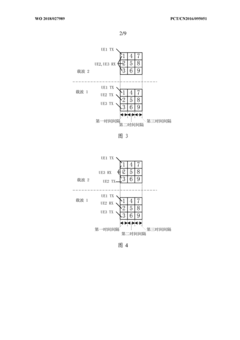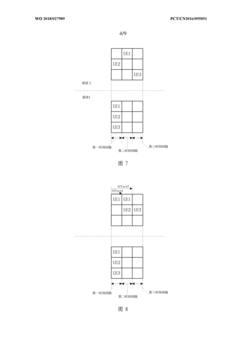How V8 Engines Drive Remote Connectivity Innovations?
JUL 4, 20259 MIN READ
Generate Your Research Report Instantly with AI Agent
Patsnap Eureka helps you evaluate technical feasibility & market potential.
V8 Engine Evolution
The evolution of V8 engines has played a pivotal role in driving remote connectivity innovations. Initially designed for high-performance automobiles, V8 engines have undergone significant transformations to meet the demands of modern connectivity requirements. The journey began with traditional mechanical V8 engines, which were primarily focused on power output and fuel efficiency.
As automotive technology advanced, electronic fuel injection systems were introduced, marking a significant milestone in V8 engine development. This innovation allowed for more precise control over fuel delivery and ignition timing, laying the groundwork for future connectivity features. The integration of electronic control units (ECUs) in V8 engines further enhanced their capabilities, enabling real-time monitoring and adjustment of engine parameters.
The next major leap came with the introduction of on-board diagnostics (OBD) systems. These systems allowed V8 engines to communicate vital information about their performance and health status, paving the way for remote diagnostics and predictive maintenance. This development was crucial in establishing the foundation for remote connectivity in vehicles powered by V8 engines.
As telecommunications technology progressed, V8 engines began incorporating telematics systems. These systems enabled real-time data transmission between the engine and remote servers, facilitating advanced features such as remote start, vehicle tracking, and performance monitoring. The integration of GPS technology further enhanced these capabilities, allowing for location-based services and improved navigation.
The advent of the Internet of Things (IoT) marked another significant milestone in V8 engine evolution. IoT-enabled V8 engines could now be part of a larger connected ecosystem, communicating with other vehicles, infrastructure, and cloud-based services. This connectivity opened up new possibilities for optimizing engine performance, improving fuel efficiency, and enhancing overall driving experience.
Recent advancements in V8 engine technology have focused on integrating artificial intelligence and machine learning algorithms. These sophisticated systems can analyze vast amounts of data collected from various sensors, allowing for predictive maintenance, adaptive performance tuning, and even autonomous driving capabilities. The evolution of V8 engines has thus transitioned from purely mechanical systems to highly intelligent, connected powerplants.
Looking ahead, the future of V8 engine evolution is likely to involve even greater integration with emerging technologies such as 5G networks, edge computing, and advanced cybersecurity measures. These developments will further enhance remote connectivity capabilities, enabling faster data transmission, more complex real-time analytics, and improved protection against potential cyber threats.
As automotive technology advanced, electronic fuel injection systems were introduced, marking a significant milestone in V8 engine development. This innovation allowed for more precise control over fuel delivery and ignition timing, laying the groundwork for future connectivity features. The integration of electronic control units (ECUs) in V8 engines further enhanced their capabilities, enabling real-time monitoring and adjustment of engine parameters.
The next major leap came with the introduction of on-board diagnostics (OBD) systems. These systems allowed V8 engines to communicate vital information about their performance and health status, paving the way for remote diagnostics and predictive maintenance. This development was crucial in establishing the foundation for remote connectivity in vehicles powered by V8 engines.
As telecommunications technology progressed, V8 engines began incorporating telematics systems. These systems enabled real-time data transmission between the engine and remote servers, facilitating advanced features such as remote start, vehicle tracking, and performance monitoring. The integration of GPS technology further enhanced these capabilities, allowing for location-based services and improved navigation.
The advent of the Internet of Things (IoT) marked another significant milestone in V8 engine evolution. IoT-enabled V8 engines could now be part of a larger connected ecosystem, communicating with other vehicles, infrastructure, and cloud-based services. This connectivity opened up new possibilities for optimizing engine performance, improving fuel efficiency, and enhancing overall driving experience.
Recent advancements in V8 engine technology have focused on integrating artificial intelligence and machine learning algorithms. These sophisticated systems can analyze vast amounts of data collected from various sensors, allowing for predictive maintenance, adaptive performance tuning, and even autonomous driving capabilities. The evolution of V8 engines has thus transitioned from purely mechanical systems to highly intelligent, connected powerplants.
Looking ahead, the future of V8 engine evolution is likely to involve even greater integration with emerging technologies such as 5G networks, edge computing, and advanced cybersecurity measures. These developments will further enhance remote connectivity capabilities, enabling faster data transmission, more complex real-time analytics, and improved protection against potential cyber threats.
Remote Connectivity Demand
The demand for remote connectivity has surged dramatically in recent years, driven by various factors including technological advancements, changing work patterns, and global events. This trend has been particularly accelerated by the COVID-19 pandemic, which forced businesses and individuals to adapt to remote work and digital communication at an unprecedented scale.
In the automotive industry, remote connectivity has become a crucial feature for modern vehicles, especially those equipped with V8 engines. These powerful engines, traditionally associated with high-performance vehicles, are now at the forefront of connectivity innovations. The integration of advanced telematics systems and Internet of Things (IoT) technologies has transformed V8-powered vehicles into mobile connectivity hubs.
The market for connected vehicles is experiencing rapid growth, with a significant portion of this demand focused on high-end vehicles often powered by V8 engines. These vehicles are increasingly expected to offer seamless integration with smartphones, real-time navigation, remote diagnostics, and over-the-air software updates. The ability to monitor and control vehicle functions remotely has become a key selling point for consumers who value both performance and connectivity.
Furthermore, the demand for remote connectivity in V8 engines extends beyond personal vehicles to commercial and industrial applications. Fleet management systems for trucks and heavy machinery equipped with V8 engines require robust remote connectivity solutions to optimize operations, monitor performance, and ensure timely maintenance.
The automotive industry's shift towards electrification has also influenced the demand for remote connectivity in V8 engines. As hybrid and electric powertrains become more prevalent, even in high-performance vehicles, the need for sophisticated connectivity solutions to manage complex powertrain systems has increased. This includes remote monitoring of battery health, charging status, and power distribution in hybrid V8 setups.
Safety and security concerns have further fueled the demand for remote connectivity in V8-powered vehicles. Features such as stolen vehicle tracking, emergency call systems, and remote immobilization have become essential, particularly for high-value vehicles often targeted by thieves. These safety features rely heavily on robust and secure remote connectivity solutions.
As the automotive industry continues to evolve, the demand for remote connectivity in V8 engines is expected to grow further. The integration of artificial intelligence, 5G networks, and advanced data analytics will likely drive the next wave of innovations in this space, offering even more sophisticated and seamless connectivity solutions for V8-powered vehicles.
In the automotive industry, remote connectivity has become a crucial feature for modern vehicles, especially those equipped with V8 engines. These powerful engines, traditionally associated with high-performance vehicles, are now at the forefront of connectivity innovations. The integration of advanced telematics systems and Internet of Things (IoT) technologies has transformed V8-powered vehicles into mobile connectivity hubs.
The market for connected vehicles is experiencing rapid growth, with a significant portion of this demand focused on high-end vehicles often powered by V8 engines. These vehicles are increasingly expected to offer seamless integration with smartphones, real-time navigation, remote diagnostics, and over-the-air software updates. The ability to monitor and control vehicle functions remotely has become a key selling point for consumers who value both performance and connectivity.
Furthermore, the demand for remote connectivity in V8 engines extends beyond personal vehicles to commercial and industrial applications. Fleet management systems for trucks and heavy machinery equipped with V8 engines require robust remote connectivity solutions to optimize operations, monitor performance, and ensure timely maintenance.
The automotive industry's shift towards electrification has also influenced the demand for remote connectivity in V8 engines. As hybrid and electric powertrains become more prevalent, even in high-performance vehicles, the need for sophisticated connectivity solutions to manage complex powertrain systems has increased. This includes remote monitoring of battery health, charging status, and power distribution in hybrid V8 setups.
Safety and security concerns have further fueled the demand for remote connectivity in V8-powered vehicles. Features such as stolen vehicle tracking, emergency call systems, and remote immobilization have become essential, particularly for high-value vehicles often targeted by thieves. These safety features rely heavily on robust and secure remote connectivity solutions.
As the automotive industry continues to evolve, the demand for remote connectivity in V8 engines is expected to grow further. The integration of artificial intelligence, 5G networks, and advanced data analytics will likely drive the next wave of innovations in this space, offering even more sophisticated and seamless connectivity solutions for V8-powered vehicles.
V8 Tech Challenges
V8 engines, traditionally associated with high-performance automobiles, are now driving innovations in remote connectivity. However, this transition presents several significant technical challenges that need to be addressed for successful implementation.
One of the primary challenges is the integration of complex connectivity systems with the existing V8 engine architecture. The robust and powerful nature of V8 engines often conflicts with the delicate electronic components required for remote connectivity. Engineers must develop innovative solutions to shield sensitive electronics from the intense heat and vibrations generated by these high-performance engines.
Power management poses another significant hurdle. V8 engines are known for their high fuel consumption, which can strain the vehicle's electrical system when additional power is required for connectivity features. Developing efficient power distribution systems and optimizing energy usage becomes crucial to ensure seamless operation of both the engine and connectivity components.
Data processing and transmission present unique challenges in the V8 engine environment. The sheer amount of data generated by modern connectivity systems requires powerful onboard computing capabilities. Integrating these systems without compromising the engine's performance or adding significant weight to the vehicle demands innovative approaches to hardware design and software optimization.
Reliability and durability are paramount concerns when implementing remote connectivity in V8-powered vehicles. The harsh operating conditions of these engines, including extreme temperatures and constant vibrations, can adversely affect the longevity of connectivity components. Engineers must develop ruggedized systems capable of withstanding these demanding environments while maintaining consistent performance over extended periods.
Compatibility with existing automotive systems is another technical challenge. V8 engines often utilize specialized control systems optimized for performance. Integrating new connectivity features without disrupting these finely-tuned systems requires careful consideration and extensive testing to ensure seamless operation and prevent conflicts between different vehicle subsystems.
Lastly, cybersecurity emerges as a critical concern as V8-powered vehicles become more connected. The increased connectivity exposes these high-performance vehicles to potential cyber threats. Developing robust security protocols and encryption methods to protect sensitive vehicle data and prevent unauthorized access becomes essential in this new landscape of connected V8 engines.
One of the primary challenges is the integration of complex connectivity systems with the existing V8 engine architecture. The robust and powerful nature of V8 engines often conflicts with the delicate electronic components required for remote connectivity. Engineers must develop innovative solutions to shield sensitive electronics from the intense heat and vibrations generated by these high-performance engines.
Power management poses another significant hurdle. V8 engines are known for their high fuel consumption, which can strain the vehicle's electrical system when additional power is required for connectivity features. Developing efficient power distribution systems and optimizing energy usage becomes crucial to ensure seamless operation of both the engine and connectivity components.
Data processing and transmission present unique challenges in the V8 engine environment. The sheer amount of data generated by modern connectivity systems requires powerful onboard computing capabilities. Integrating these systems without compromising the engine's performance or adding significant weight to the vehicle demands innovative approaches to hardware design and software optimization.
Reliability and durability are paramount concerns when implementing remote connectivity in V8-powered vehicles. The harsh operating conditions of these engines, including extreme temperatures and constant vibrations, can adversely affect the longevity of connectivity components. Engineers must develop ruggedized systems capable of withstanding these demanding environments while maintaining consistent performance over extended periods.
Compatibility with existing automotive systems is another technical challenge. V8 engines often utilize specialized control systems optimized for performance. Integrating new connectivity features without disrupting these finely-tuned systems requires careful consideration and extensive testing to ensure seamless operation and prevent conflicts between different vehicle subsystems.
Lastly, cybersecurity emerges as a critical concern as V8-powered vehicles become more connected. The increased connectivity exposes these high-performance vehicles to potential cyber threats. Developing robust security protocols and encryption methods to protect sensitive vehicle data and prevent unauthorized access becomes essential in this new landscape of connected V8 engines.
Current V8 Solutions
01 Remote monitoring and control of V8 engines
Systems for remotely monitoring and controlling V8 engines, allowing users to access engine data, perform diagnostics, and adjust settings from a distance. This technology enhances engine performance management and enables predictive maintenance.- Remote monitoring and control of V8 engines: Systems and methods for remotely monitoring and controlling V8 engines, allowing for real-time diagnostics, performance optimization, and maintenance scheduling. This technology enables remote access to engine data, facilitating efficient management and troubleshooting of engine operations.
- Wireless connectivity for V8 engine diagnostics: Implementation of wireless connectivity solutions for V8 engine diagnostics, enabling seamless data transmission between the engine and remote diagnostic tools. This allows for quick identification of issues and remote software updates, improving overall engine performance and reliability.
- IoT integration for V8 engine management: Incorporation of Internet of Things (IoT) technology in V8 engine management systems, facilitating advanced data analytics, predictive maintenance, and enhanced connectivity. This integration enables comprehensive engine monitoring and control through cloud-based platforms.
- Mobile app interfaces for V8 engine control: Development of mobile application interfaces for remote V8 engine control and monitoring. These apps provide user-friendly access to engine data, performance metrics, and control functions, allowing operators to manage engine settings and receive alerts on their smartphones or tablets.
- Cybersecurity measures for V8 engine connectivity: Implementation of robust cybersecurity protocols to protect remote connectivity systems for V8 engines. These measures ensure secure data transmission, prevent unauthorized access, and safeguard critical engine control functions from potential cyber threats.
02 Wireless connectivity for V8 engine diagnostics
Implementation of wireless communication protocols to facilitate real-time diagnostics of V8 engines. This allows for efficient troubleshooting and maintenance by transmitting engine data to remote devices or service centers.Expand Specific Solutions03 Cloud-based V8 engine management systems
Integration of V8 engines with cloud-based platforms for comprehensive engine management. This enables data storage, analysis, and remote access to engine performance metrics, enhancing overall efficiency and maintenance scheduling.Expand Specific Solutions04 IoT-enabled V8 engine connectivity
Incorporation of Internet of Things (IoT) technology in V8 engines to enable seamless connectivity with other devices and systems. This facilitates advanced data collection, analysis, and integration with smart vehicle ecosystems.Expand Specific Solutions05 Secure remote access protocols for V8 engines
Development of secure communication protocols and encryption methods for remote access to V8 engine systems. This ensures data protection and prevents unauthorized access while enabling remote diagnostics and control.Expand Specific Solutions
Key V8 Engine Players
The V8 engine remote connectivity innovation landscape is in a dynamic growth phase, with a rapidly expanding market driven by increasing demand for connected vehicle technologies. The market size is projected to grow significantly as automotive manufacturers integrate more advanced connectivity features. Technologically, the field is evolving quickly, with companies like Huawei, Ericsson, and NVIDIA leading in developing sophisticated V8 engine connectivity solutions. These firms are leveraging their expertise in telecommunications and computing to create cutting-edge systems that enhance vehicle performance, diagnostics, and user experience. Universities such as Beijing Jiaotong University and Beihang University are contributing to research and development, fostering innovation in this sector.
Huawei Technologies Co., Ltd.
Technical Solution: Huawei has developed a V8 engine-based remote connectivity solution that leverages advanced 5G technology and edge computing. Their system utilizes a distributed architecture, where the V8 engine's processing power is combined with cloud resources to enable real-time data analysis and decision-making. Huawei's solution incorporates AI algorithms to optimize engine performance and predict maintenance needs, while also ensuring secure and low-latency communication between vehicles and infrastructure[1][3]. The system supports over-the-air (OTA) updates, allowing for continuous improvement of engine software and connectivity features without requiring physical intervention[5].
Strengths: Strong 5G infrastructure, advanced AI capabilities, and extensive experience in telecommunications. Weaknesses: Potential geopolitical challenges in some markets, and reliance on partnerships for automotive expertise.
Telefonaktiebolaget LM Ericsson
Technical Solution: Ericsson's contribution to V8 engine remote connectivity innovations focuses on providing robust cellular network infrastructure and IoT platforms. Their solution leverages 5G technology to enable ultra-low latency communication between V8-equipped vehicles and cloud services. Ericsson's system utilizes their IoT Accelerator platform, which provides scalable and secure connectivity management for connected vehicles[13]. The platform supports features such as remote diagnostics, over-the-air updates, and real-time performance monitoring for V8 engines[14]. Ericsson's solution also incorporates their network slicing technology, allowing for dedicated and optimized network resources for critical vehicle communications[15].
Strengths: Global leader in 5G technology, extensive experience in IoT and cellular connectivity. Weaknesses: Less direct involvement in engine development, reliance on partnerships with automotive manufacturers.
V8 Connectivity Patents
Prediction based message transmission triggering
PatentWO2018202601A1
Innovation
- Implementing a prediction-based message transmission trigger system that sends updates only when the actual status of an object differs from its predicted status, using linear extrapolation to determine changes in heading, location, speed, and acceleration, thereby reducing unnecessary signaling and conserving resources.
Communication method and apparatus
PatentWO2018027989A1
Innovation
- By configuring multiple carriers and resource pools between terminals, and determining the terminal's sending and receiving behavior based on resource configuration policies and operating modes, half-duplex constraints are avoided and the reliability and delay performance of information transmission are improved.
V8 Cybersecurity Aspects
As V8 engines continue to drive remote connectivity innovations, cybersecurity aspects have become increasingly critical. The integration of advanced connectivity features in V8-powered vehicles introduces new attack surfaces and potential vulnerabilities that must be addressed to ensure the safety and privacy of users.
One of the primary cybersecurity concerns in V8-enabled remote connectivity is the protection of communication channels between the vehicle and external networks. Secure protocols and encryption methods are essential to prevent unauthorized access and data interception. Manufacturers are implementing robust authentication mechanisms and end-to-end encryption to safeguard sensitive information transmitted between the vehicle and cloud-based services.
Another crucial aspect is the protection of the V8 engine's electronic control unit (ECU) from cyber attacks. As these systems become more sophisticated and interconnected, they become potential targets for malicious actors. Manufacturers are developing intrusion detection and prevention systems specifically tailored for V8 ECUs to identify and mitigate potential threats in real-time.
Over-the-air (OTA) updates, while offering significant benefits for remote maintenance and feature enhancements, also present cybersecurity challenges. Ensuring the integrity and authenticity of software updates is paramount to prevent the introduction of malware or unauthorized modifications to the V8 engine's control systems. Secure boot processes and digital signatures are being implemented to verify the legitimacy of updates before installation.
The increasing connectivity of V8-powered vehicles also raises concerns about data privacy. As these vehicles collect and transmit vast amounts of data, including location information and driving patterns, robust data protection measures are necessary. Manufacturers are implementing data anonymization techniques and giving users greater control over their data sharing preferences to address these privacy concerns.
Cybersecurity in V8-enabled remote connectivity extends beyond the vehicle itself to encompass the entire ecosystem, including mobile applications, cloud services, and charging infrastructure. A holistic approach to security is required, involving collaboration between automotive manufacturers, technology providers, and cybersecurity experts to develop comprehensive security frameworks and best practices.
As the threat landscape evolves, continuous monitoring and adaptive security measures are becoming essential components of V8 cybersecurity strategies. Machine learning and artificial intelligence are being leveraged to detect anomalies and predict potential security breaches, allowing for proactive mitigation of cyber threats in V8-powered connected vehicles.
One of the primary cybersecurity concerns in V8-enabled remote connectivity is the protection of communication channels between the vehicle and external networks. Secure protocols and encryption methods are essential to prevent unauthorized access and data interception. Manufacturers are implementing robust authentication mechanisms and end-to-end encryption to safeguard sensitive information transmitted between the vehicle and cloud-based services.
Another crucial aspect is the protection of the V8 engine's electronic control unit (ECU) from cyber attacks. As these systems become more sophisticated and interconnected, they become potential targets for malicious actors. Manufacturers are developing intrusion detection and prevention systems specifically tailored for V8 ECUs to identify and mitigate potential threats in real-time.
Over-the-air (OTA) updates, while offering significant benefits for remote maintenance and feature enhancements, also present cybersecurity challenges. Ensuring the integrity and authenticity of software updates is paramount to prevent the introduction of malware or unauthorized modifications to the V8 engine's control systems. Secure boot processes and digital signatures are being implemented to verify the legitimacy of updates before installation.
The increasing connectivity of V8-powered vehicles also raises concerns about data privacy. As these vehicles collect and transmit vast amounts of data, including location information and driving patterns, robust data protection measures are necessary. Manufacturers are implementing data anonymization techniques and giving users greater control over their data sharing preferences to address these privacy concerns.
Cybersecurity in V8-enabled remote connectivity extends beyond the vehicle itself to encompass the entire ecosystem, including mobile applications, cloud services, and charging infrastructure. A holistic approach to security is required, involving collaboration between automotive manufacturers, technology providers, and cybersecurity experts to develop comprehensive security frameworks and best practices.
As the threat landscape evolves, continuous monitoring and adaptive security measures are becoming essential components of V8 cybersecurity strategies. Machine learning and artificial intelligence are being leveraged to detect anomalies and predict potential security breaches, allowing for proactive mitigation of cyber threats in V8-powered connected vehicles.
V8 Environmental Impact
The environmental impact of V8 engines in the context of remote connectivity innovations is a complex and multifaceted issue. As these powerful engines continue to play a crucial role in various industries, their environmental footprint becomes increasingly significant. V8 engines, known for their high performance and efficiency, have traditionally been associated with higher fuel consumption and emissions compared to smaller engine configurations.
However, recent advancements in V8 engine technology have led to substantial improvements in fuel efficiency and reduced emissions. These developments are particularly relevant in the realm of remote connectivity innovations, where V8 engines are often utilized in large-scale industrial applications, such as power generation for remote data centers or telecommunications infrastructure.
One of the key environmental concerns associated with V8 engines is their carbon dioxide emissions. As global efforts to combat climate change intensify, the pressure to reduce greenhouse gas emissions from all sources, including V8 engines, has increased. In response, engine manufacturers have implemented various technologies to improve combustion efficiency and reduce fuel consumption, thereby lowering CO2 emissions.
Another significant environmental consideration is the impact of V8 engines on air quality. Emissions of nitrogen oxides (NOx) and particulate matter from these engines can contribute to air pollution, particularly in urban areas or regions with high industrial activity. To address this issue, advanced emission control systems, such as selective catalytic reduction (SCR) and diesel particulate filters (DPF), have been developed and integrated into modern V8 engine designs.
The use of alternative fuels and hybrid technologies has also emerged as a promising approach to mitigate the environmental impact of V8 engines. Biodiesel, natural gas, and hydrogen fuel cells are being explored as cleaner alternatives to traditional fossil fuels. Additionally, hybrid systems that combine V8 engines with electric motors can significantly reduce overall fuel consumption and emissions, especially in applications where intermittent high power output is required.
In the context of remote connectivity innovations, the environmental impact of V8 engines extends beyond direct emissions. These engines often power backup generators and auxiliary power units for critical infrastructure, ensuring uninterrupted connectivity in remote or challenging environments. While essential for maintaining reliable communications, the operation of these systems can have localized environmental effects, including noise pollution and potential soil or water contamination from fuel storage and handling.
As the demand for remote connectivity continues to grow, driven by the expansion of IoT devices and edge computing, the role of V8 engines in powering these systems is likely to evolve. This evolution presents both challenges and opportunities for further reducing the environmental footprint of these engines while maintaining their critical function in supporting connectivity innovations.
However, recent advancements in V8 engine technology have led to substantial improvements in fuel efficiency and reduced emissions. These developments are particularly relevant in the realm of remote connectivity innovations, where V8 engines are often utilized in large-scale industrial applications, such as power generation for remote data centers or telecommunications infrastructure.
One of the key environmental concerns associated with V8 engines is their carbon dioxide emissions. As global efforts to combat climate change intensify, the pressure to reduce greenhouse gas emissions from all sources, including V8 engines, has increased. In response, engine manufacturers have implemented various technologies to improve combustion efficiency and reduce fuel consumption, thereby lowering CO2 emissions.
Another significant environmental consideration is the impact of V8 engines on air quality. Emissions of nitrogen oxides (NOx) and particulate matter from these engines can contribute to air pollution, particularly in urban areas or regions with high industrial activity. To address this issue, advanced emission control systems, such as selective catalytic reduction (SCR) and diesel particulate filters (DPF), have been developed and integrated into modern V8 engine designs.
The use of alternative fuels and hybrid technologies has also emerged as a promising approach to mitigate the environmental impact of V8 engines. Biodiesel, natural gas, and hydrogen fuel cells are being explored as cleaner alternatives to traditional fossil fuels. Additionally, hybrid systems that combine V8 engines with electric motors can significantly reduce overall fuel consumption and emissions, especially in applications where intermittent high power output is required.
In the context of remote connectivity innovations, the environmental impact of V8 engines extends beyond direct emissions. These engines often power backup generators and auxiliary power units for critical infrastructure, ensuring uninterrupted connectivity in remote or challenging environments. While essential for maintaining reliable communications, the operation of these systems can have localized environmental effects, including noise pollution and potential soil or water contamination from fuel storage and handling.
As the demand for remote connectivity continues to grow, driven by the expansion of IoT devices and edge computing, the role of V8 engines in powering these systems is likely to evolve. This evolution presents both challenges and opportunities for further reducing the environmental footprint of these engines while maintaining their critical function in supporting connectivity innovations.
Unlock deeper insights with Patsnap Eureka Quick Research — get a full tech report to explore trends and direct your research. Try now!
Generate Your Research Report Instantly with AI Agent
Supercharge your innovation with Patsnap Eureka AI Agent Platform!
